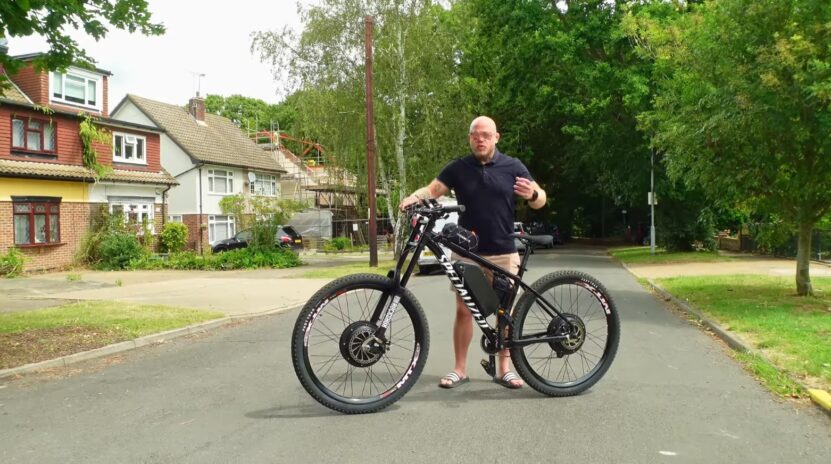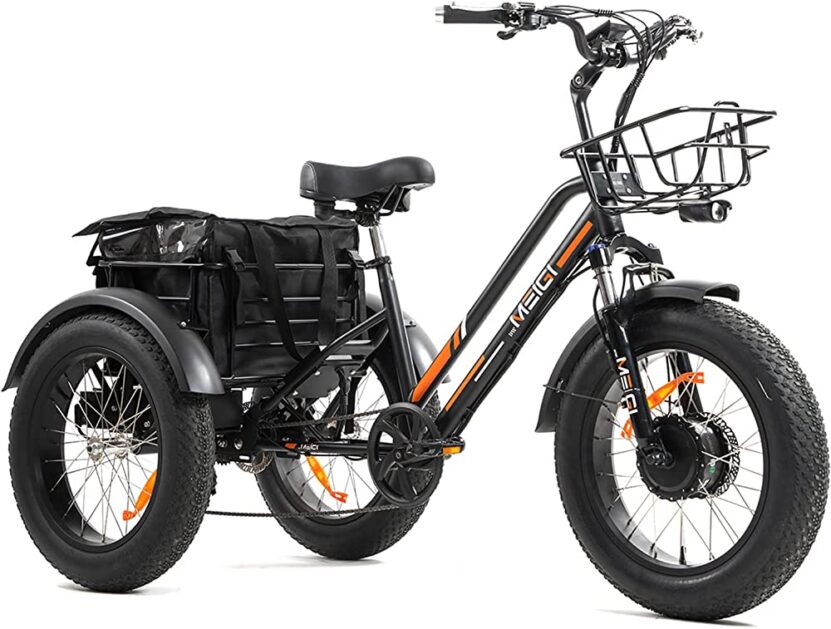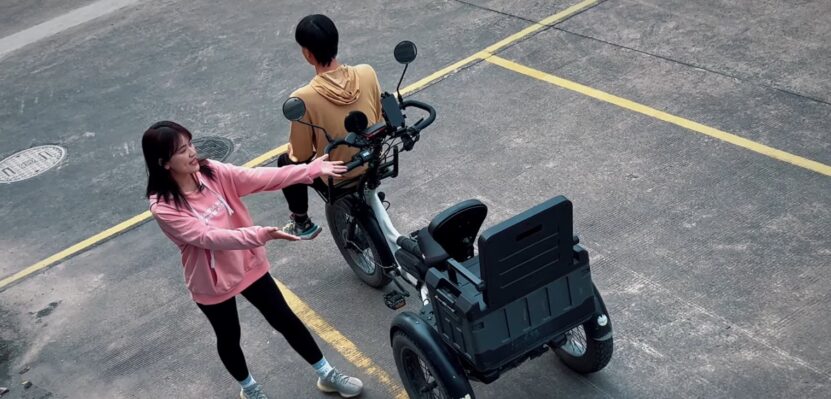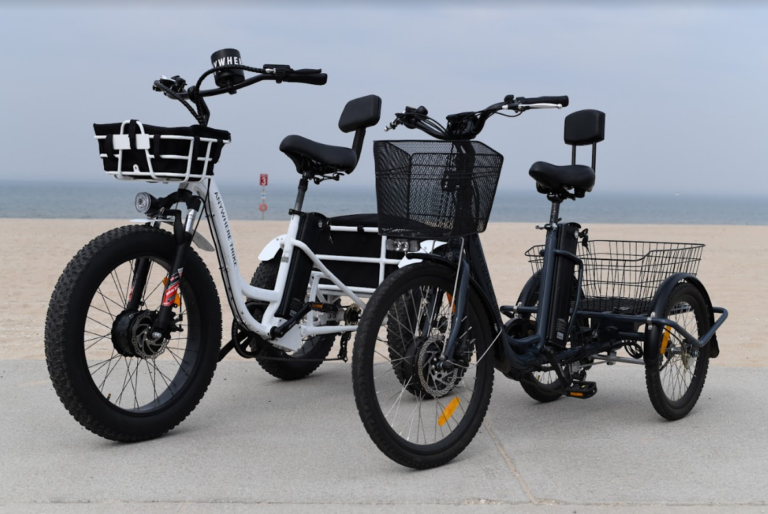When it comes to electric bikes, a common dilemma among riders is choosing between two-wheelers and three-wheelers.
With the increasing popularity of electric trikes and 3-wheel electric bikes, more and more riders are contemplating which option suits their requirements best. In this article, we’ll explore the features, benefits, and downsides of both these e-bike types to make the right call.
Two-Wheel Electric Bikes

A two-wheel electric bike is a traditional e-bike with two wheels, usually equipped with an electric motor for pedal assistance. They are lightweight, easy to handle, and are available in various designs and styles. Two-wheel e-bikes are suitable for a broad range of riders due to their versatility.
Pros
Agility and Maneuverability:Two-wheel e-bikes allow for better handling and control, making them highly effective in navigating tight corners and changing directions swiftly.
- Speed: Generally, two-wheel electric bikes are faster than their three-wheel counterparts, due to lesser weight and friction on the road.
- Variety: They are available in numerous designs, sizes and styles, catering to diverse tastes and purposes.
- Storage and Portability: Typically, two-wheel electric bikes are more convenient to store and transport than three-wheelers, as they take up less space.
Cons
- Less Stability: Two-wheelers require better balance, which may be challenging for some riders, especially the elderly or those with mobility issues.
- Limited Carrying Capacity: E-bikes with two wheels have limited cargo space, making them less suitable for those who need to carry more items on their rides.
Three-Wheel Electric Bikes

Three-wheel electric bikes or electric trikes, such as the MF-30 Electric Trike available at MaxFoot, feature two wheels in the rear and one wheel at the front. Equipped with an electric motor, they provide additional stability and versatility compared to two-wheelers.
Pros
- Stability: The extra wheel at the rear increases balance and stability, making it easier for riders with limited balance to cycle with confidence.
- Greater Cargo Space: E-trikes often have a large basket or rack at the back, allowing for more significant carrying capacity, accommodating groceries, a pet carrier, or other equipment.
- Ideal for Special Needs: Three-wheelers are usually more comfortable for riders with mobility issues, physical disabilities, or those recovering from an injury.
- More Comfortable Ride: The stability and relaxed riding position of an electric trike provide a more comfortable experience over long distances.
Cons
- Maneuverability: E-trikes have a bigger turning radius than traditional e-bikes, which may make sharp turns or tight spaces harder to navigate.
- Weight and Size: They are often heavier and bulkier, which can lead to challenges in storage and transport.
- Price: Three-wheel electric bikes can be more expensive than their two-wheel counterparts due to their additional features and larger frame.
What make the MF-30 Electric Trike Unique?
The MF-30 Electric Trike is a one-of-a-kind personal transportation vehicle that boasts a plethora of unique features. Its powerful motor and three fully electric wheels make it efficient and easy to operate, while its sleek design and versatile riding modes make it ideal for commuting, leisurely rides, or even off-road adventures.
One notable feature of the MF-30 Electric Trike is its high-performance lithium-ion battery pack, which allows the trike to travel up to 50 kilometers on a single charge. This means riders can enjoy long rides without the hassle of constantly stopping and recharging. The battery also charges quickly, taking only a few hours to reach full power.
In addition to its impressive range and charging capabilities, the MF-30 Electric Trike also features cutting-edge safety features, such as a built-in GPS tracker and anti-theft alarm system. This ensures that riders can enjoy their ride with peace of mind, knowing their vehicle is secure and trackable at all times.
Some models feature additional features such as cargo baskets, adjustable seats, and detachable batteries, making them even more versatile and practical for daily use. Additionally, their electric motors are environmentally friendly and emit significantly less pollution than traditional gas-powered vehicles.
Moreover, the MF-30 Electric Trike is incredibly versatile, with various riding modes available, including normal, eco, and sport modes. This level of adjustability allows riders to tailor their ride to their personal preferences, making it suitable for various terrains and weather conditions. It also has an ergonomic design that provides maximum comfort and stability during long rides, unlike traditional bikes or mopeds.
Overall, the MF-30 Electric Trike is a revolutionary personal transportation vehicle that offers unparalleled convenience, flexibility, and performance. Its advanced battery technology, high-tech features, and unique design make it the go-to choice for anyone seeking a safe, eco-friendly, and comfortable mode of transportation. Please visit for more details https://maxfoot.bike/.
Making the Decision

Ultimately, the best type of vehicle for you will depend on your individual needs and preferences. If you are looking for a vehicle that is agile, maneuverable, and fuel-efficient, then a two-wheeler may be a good option for you. If you are looking for a vehicle that is stable, easy to ride, and has more cargo space, then a 3 wheel electric bike may be a better choice.
Here are some additional things to consider when making your decision:
- Your riding experience: If you are a beginner rider, or if you have any physical limitations that may affect your ability to balance, then a three-wheeler may be a better option for you.
- The type of riding you will be doing: If you plan on doing a lot of city riding, then a two-wheeler may be a better option. If you plan on doing a lot of highway riding, then a three-wheeler may be a better option.
- Your budget: Three-wheelers are often more expensive than two-wheelers.
Once you have considered all of these factors, you will be able to make an informed decision about whether to buy a two-wheeler or a three-wheeler.

